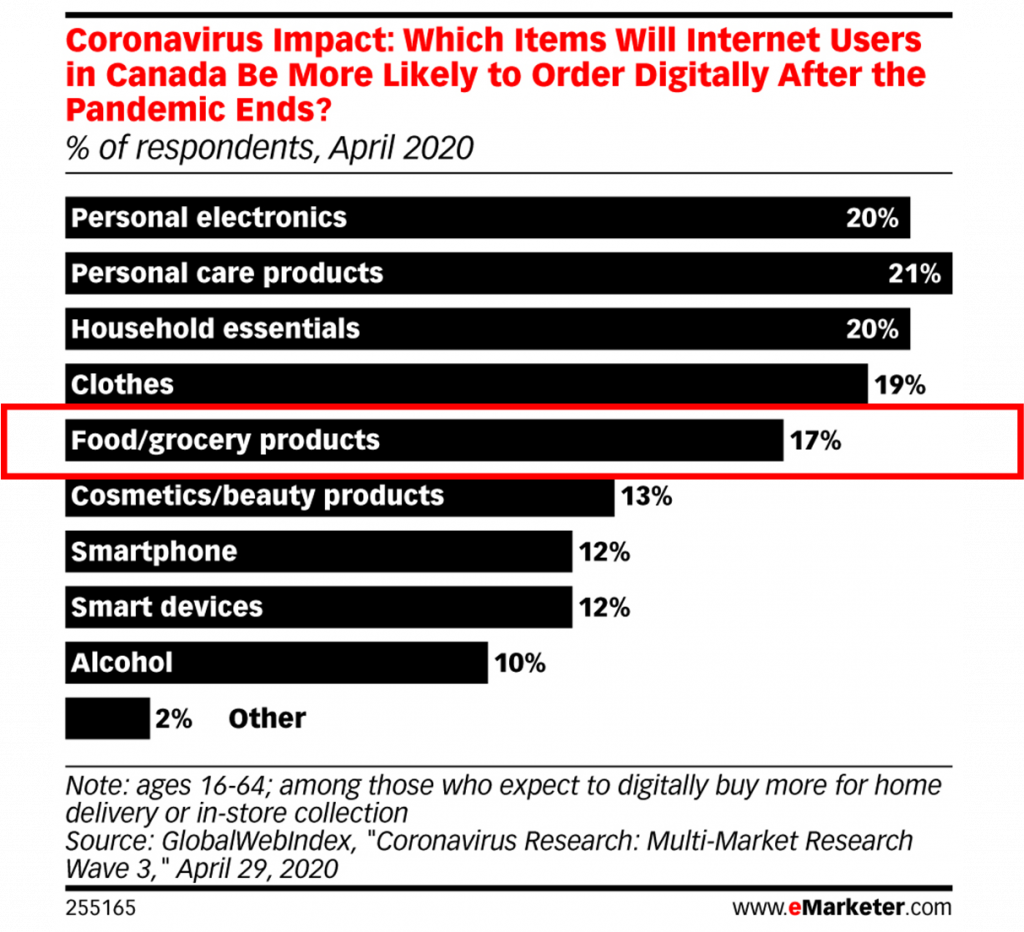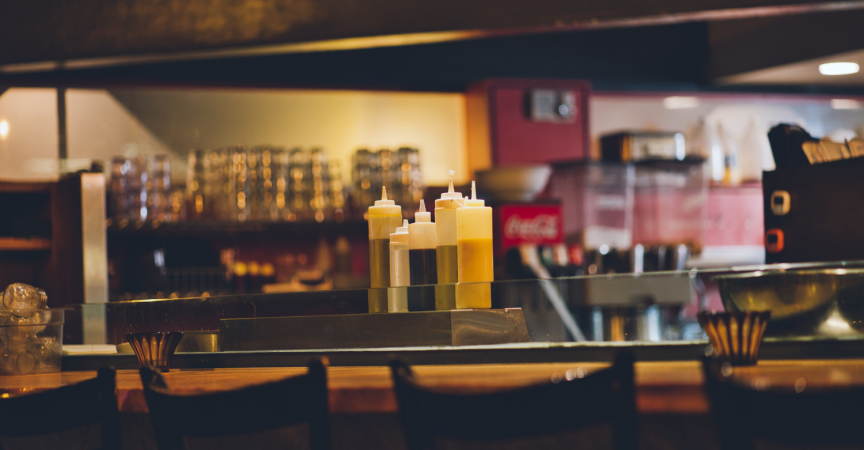The Unchartered Waters of COVID-19: Changing Consumer Habits
Restaurants are facing an uncertain future amid COVID-19. Hundreds of thousands of food service jobs have been lost since the breakout, and about one in ten restaurants have permanently shut down (1). The uncertainty, coupled with the change in consumer behavior, is a tremendous anxiety trigger for restaurants that must find a way to survive.
How has COVID-19 changed consumer habits in the restaurant space?
It does not come as a surprise that the number of diners in Canada, as well as in many other countries, has plummeted to zero over the past couple of months due to COVID-19.
The graph below shows the year-over-year change in seated diners at restaurants on the OpenTable Network (2).

Consumers have had to find
alternatives to dining at restaurants. A survey conducted by GWI (3)
found that 19% of Canadian respondents have indicated that they are shopping
online for food/grocery products more than they have before.
Moreover, in conducting an analysis of social conversations in Canada around
COVID-19 and restaurants in the last month, it becomes quickly apparent that
food delivery is one of the most popular conversation topics.


Source: Google Search Trends, Canada, March 13-April 11, 2020 vs February 13-March 13, 2020
There is a clear shift from “restaurants
near me” searches to “delivery” searches (4),
as Canadian consumers break their habits and change their behaviors in response
to the pandemic. Consumers are looking for alternative mealtime solutions to
resort to.
“Delivery” search interest increased 130% from March to April, compared to the
30 days prior (5). According
to Think with Google: “Canadians were prompted to participate in the launch of
a weekly National Takeout Day to support local restaurants, we saw
the largest spike in search interest for “take out” this year.”
COVID-19 will have a lasting
impact on consumer behavior. When Canadian consumers were asked about the items
that they will be more likely to order digitally after the pandemic comes to an
end, 17% indicated they will still order food/grocery products online.

Restaurants need to come to terms with the new reality, the new “normal”. Consumers are still searching for you in the digital space, but what they’re looking for in terms of services provided is what has changed – pivoting strategies to focus on delivery and take-out during dine-in limitations is where the opportunity lies.
Adjusting to change

Restaurants have been scrambling to reinvent themselves in an attempt to remain relevant and to be able to survive the tide.
The vast majority of restaurants have implemented operational changes. According to a COVID-19 report by Datassential, 74% of US restaurants had stopped their dine-in service back in March. 59% added curbside pickup and 30% began offering contactless delivery.
Restaurants that were not offering online ordering or food delivery options had to act quickly to be able to survive: 22% signed on to third-party delivery services, and 20% added new online ordering functionality.
The times are changing, consumer behavior and expectations are also changing. Restaurants who fail to adapt and catch up will be left behind.
Stay relevant, and keep customers informed
There is no doubt that moving forward in these uncharted waters will be the biggest challenge facing restaurants today. Here are some strategies that will help operators and businesses in the restaurant industry adapt and remain relevant in these unprecedented times.
Communicate often, sensitively, and proactively
Keep communication
lines open. Interact with your customers often; reach out to them with the
appropriate tone and message. According to a study by Ipsos (commissioned by
Google), 89% of Canadians think it’s appropriate to hear from brands during
this crisis, with more than half of the respondents wanting to hear how brands
are changing their approach to meet their needs (6).

The medium on which restaurants choose to communicate with customers is also equally important.
According to an Edelman report (accessed through eMarketer), 54% of Canadian adults indicate that they prefer brands to communicate with them about the pandemic and how they are responding to the crisis via email.
Therefore, sending email updates to your customers is more than just a communication strategy; it’s something that customers expect.
Be proactive and be present. Offer customers choices and convenient alternatives. Talk openly about operational changes, limitations, and shifts.
Address their concerns about safety
Respond to customer concerns about safety, which has become a hot topic for obvious reasons. Reassure customers that you understand their concerns and that you are taking the necessary steps to address the current situation. Abide by safety precautions and procedures and communicate that openly. See the Restaurants Canada COVID-19 Rapid Recovery Guide for more details.
Make your customers’ safety your number 1 priority.
Keep customer interest alive
Make sure your customers are engaged enough so that they visit your restaurant after the lockdown is over. Offer promotions and coupons, attract customers back from e-commerce to your physical locations. Build excitement for when it’s time to re-open.
In a nutshell, maintaining customer connections through times of uncertainty is of paramount importance; the restaurants that will provide their customers with assistance during this crisis will be remembered and appreciated.









